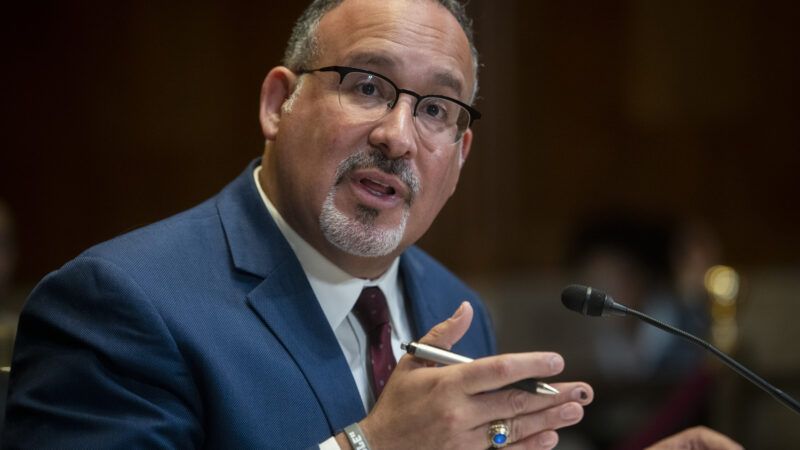The Government's Solution to FAFSA Chaos: Spend $50 Million More
Instead of throwing money at the problem, the Education Department should commit to fixing the form for next year.

Following persistent technical issues with this year's updated, streamlined Free Application for Federal Student Aid (FAFSA) form, the Education Department has announced a $50 million program to help more students complete the form—next year.
The chunk of funding is aimed at "expand[ing] the availability of advisers, counselors, and coaches to support students and contributors through the FAFSA applications," according to a Monday press release.
"We are determined to close the FAFSA completion gap," Deputy Secretary of Education Cindy Marten said. "The funding we're announcing today will support states, districts, and community-based groups [to] build capacity and leverage their power to ensure that every student who needs help paying for college turns in their FAFSA form."
FAFSA is required for any college students seeking federal grants or loans. Most colleges also use the form to determine how much institutional financial aid to offer students. In a typical year, over 15 million students and their families fill out the FAFSA form. But as of late April, successful applications are down 24 percent this year due to ubiquitous technical bugs in the updated form.
This year's issues stem from the Consolidated Appropriations Act of 2021, which mandated that the Education Department release a simplified version of the FAFSA form. The updated form was released in December—more than two months later than the typical release date. Almost immediately, the form was plagued with errors and bugs that made it nearly impossible to complete for many students.
FAFSA's own website details many of the issues with the form since its release. While most can be fixed with complicated "workarounds," some kept affected students from filling out the form for months. In March, the Education Department even announced that they had incorrectly calculated the completed forms of 200,000 students, leading to some possibly receiving more generous financial aid offers than they were actually eligible for.
Instead of publicly committing to solving these issues for next year's form, the Education Department is attempting to ameliorate its mistakes by throwing money at the problem. Why make a better FAFSA when you can pay people to shepherd students and their families through an infuriatingly complex process?
According to USA Today, the Education Department usually releases a draft version of next year's FAFSA in February or March, but that hasn't happened yet—hardly a good sign for next year's form.
While it's unclear whether students will have a smoother FAFSA experience next year, at least they can say they've gotten an apology.
"I apologize to the students and families that have had to deal with delays," Secretary of Education Miguel Cardona said during a congressional hearing this week. "I know how frustrating that is."


Show Comments (25)